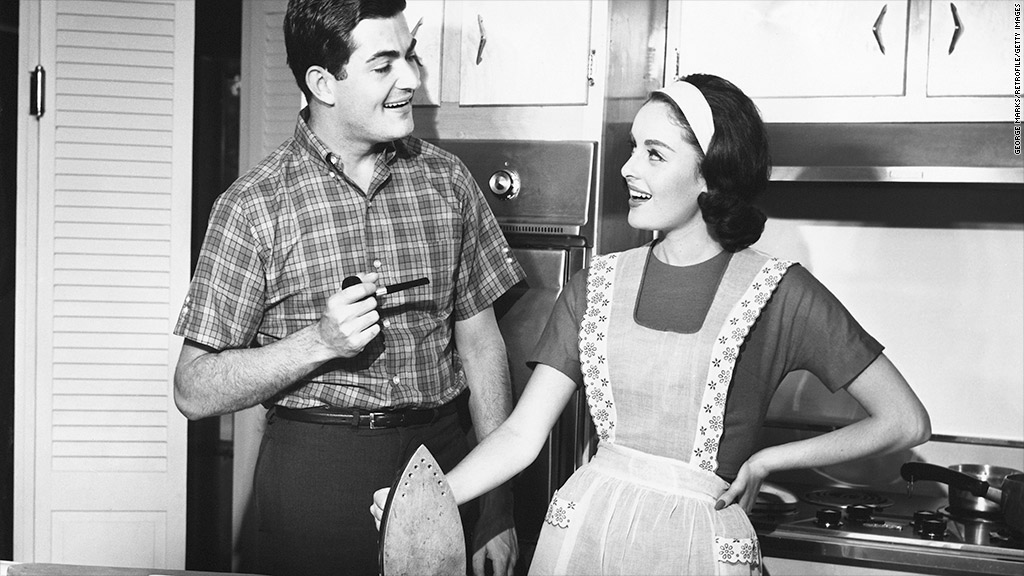
Despite gains for working women over the last few decades, two basic facts remain true: Men still work longer hours in a paid profession, and women do more of the cooking, cleaning and child-rearing at home.
Working in the home is not usually paid. But if both paid and unpaid work are combined, it's the women who put in the longest hours.
The Organization for Economic Cooperation and Development tracked 28 countries in the developed world, and found that in 22 of them, women end up working longer hours than men in a given week.
You tell us: What's your housework worth?
The difference was most stark in Italy, where women work an average of 22 hours in a paid job, in addition to doing 35 hours of housework each week. That's about 11 more hours than the average Italian man works both inside and outside the home.
"Overly heavy workloads for women with the 'double burden' of holding a job and looking after the family can generate time deprivation and stress, with negative effects on life satisfaction and health," notes the OECD.
In all countries tracked, women did the majority of the housework -- an imbalance that can hinder them from participating fully in the job market and building their careers, the OECD said.
Related: Chore wars: 10 places where men help the most
There were six countries where men more than made up for the chore gap by working longer hours at a paid job: Japan, New Zealand, Norway, the Netherlands, Denmark and Sweden.
In the United States, men and women work a nearly equal number of hours, but the women shoulder significantly more of the household burden. American men work an average of 50.6 hours a week (33 hours at a job and 17.6 hours on household tasks). Women, who are more likely to be employed part time, worked 50.9 hours a week (23.8 hours at a job and 27.1 hours at home).
Totaling it all up, the average American woman actually works 18 minutes more than a man each week, but she is compensated for fewer than half her hours. The American man, on the other hand, is paid for 65% of his work.
Related: Why I choose to not work
The OECD also noted that men tend to have slightly more positive feelings about housework than women, because they're more likely to combine a chore with a leisurely activity. Take for example, a father who looks after the kids while reading a newspaper or watching a football game.

Women, on the other hand, multitask more frequently, but are more likely to combine one chore, like childcare, with a second chore, such as cooking.
While most countries are still far from a 50-50 balance between the sexes, the trend is heading in that direction.
In some cases, it's because men are chipping in more, but the OECD also notes more couples are outsourcing housework by eating out or buying prepared foods, using childcare services or hiring help for cleaning.


